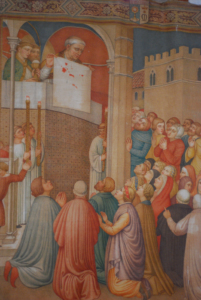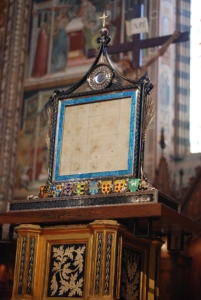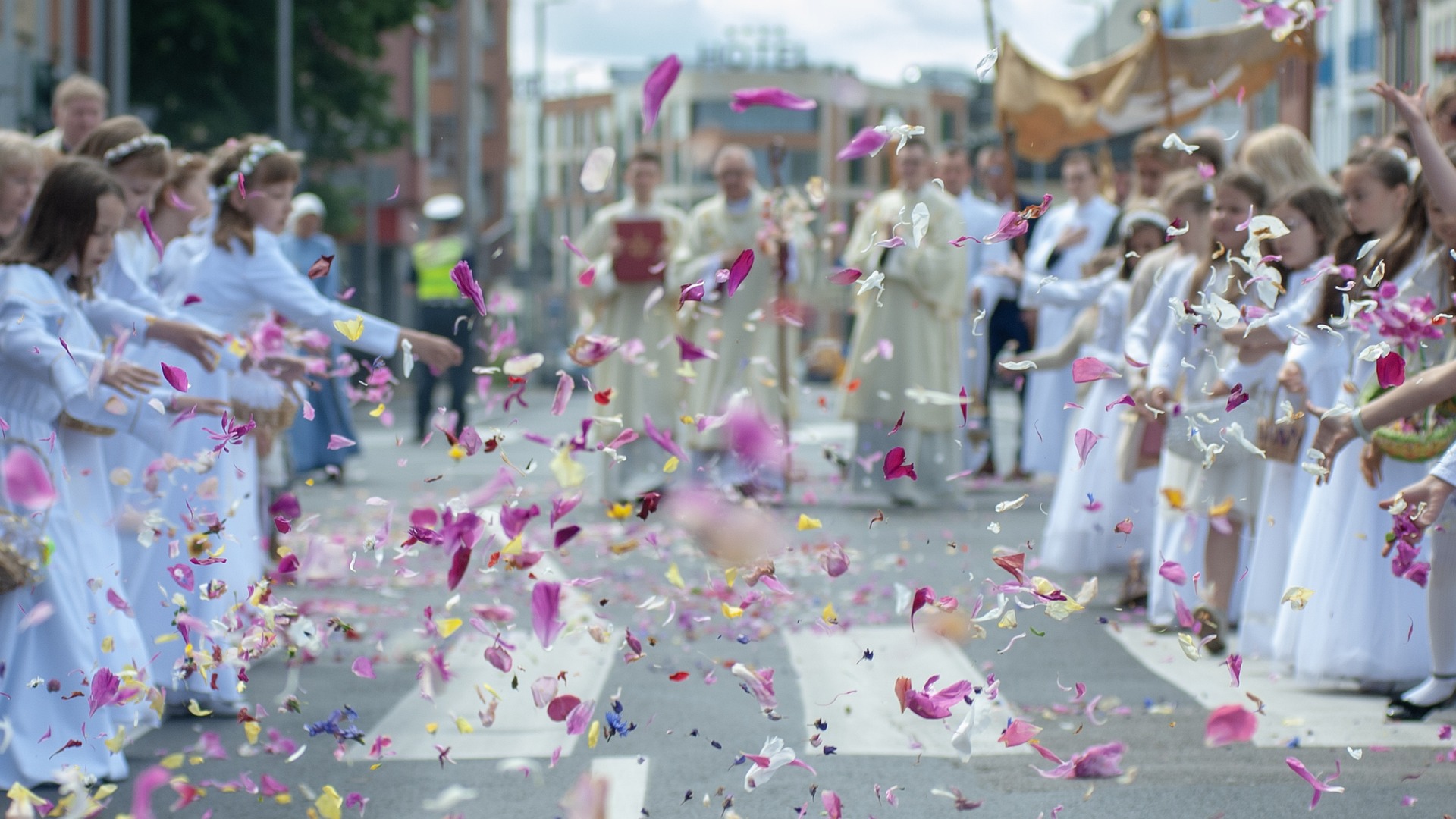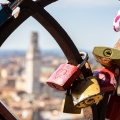Image Radosław Zmudziński – Pixabay
Umbria, the green heart of Italy, is also a spiritually rich land. It is the cradle of unparalleled figures in Christian history like St. Benedict, St. Francis, St. Clare, and St. Rita of Cascia. One of its most beautiful cities in the region is Orvieto, located on a hilltop and surrounded by vineyards and olive groves.
The city’s historic center is a labyrinth of medieval alleys, lively squares, and impressive monuments. Among its buildings, the beautiful Cathedral (the famed Duomo Di Orvieto, also known as the Cattedrale di Santa Maria Assunta) dominates the city, with its remarkable white marble façade. A masterpiece of Gothic architecture, this church is the city’s main symbol, standing in the very middle of its central square.
But the cathedral’s main attraction is not its façade, nor its famed Rose Window, nor Luca Signorelli’s cycle of the Apocalypse, or Fra Angelico’s decoration of the Chapel of Saint Brizio. This honor goes to the Chapel of the Corporal, which holds the relics of the most famous Eucharistic miracle in history. Its importance is such that it is decorated with frescoes by both Signorelli and Fra Angelico.
A stunning miracle

According to tradition, in 1263, a priest named Peter of Prague was celebrating Mass in Bolsena, near Orvieto. He had long struggled with doubts regarding the doctrine of transubstantiation – the supernatural transformation of bread and wine into the Body and Blood of Jesus Christ during the Eucharist. He decided to make a pilgrimage to Rome to fight his doubts by the tomb of St. Peter. But, while celebrating Mass in the Grotto of Santa Cristina, the miracle took place: the consecrated host began to bleed. The oldest account of this miracle, written by St. Anthony of Florence (15th century), claims the priest was so scared that he tried to clean up the blood, but it kept on dripping into the marble stairs leading to the main altar.

Deeply moved by the event, the priest ran to Orvieto to tell Pope Urban IV about it – who happened to be in the city. The pope ordered the corporal and the tablecloth to be taken to him immediately.
The miracle of Bolsena had a big impact on the Catholic Church. So much so, that it led Pope Urban IV to proclaim the solemn feast of Corpus Christi, which honors the Blessed Sacrament. It also inspired the construction of the magnificent Cathedral of Orvieto, which houses the sacred objects from the miracle. Even more: the Pope asked Thomas Aquinas himself to write the liturgy for the new feast of Corpus Christi. Aquinas didn’t just write the liturgy: he also composed five Eucharistic hymns, three of which are still used today.
It is no surprise, then, that the Chapel of the Corporal in the Cathedral of Orvieto is a popular pilgrimage destination for people from all over the world who come to venerate the stained corporal and tablecloth that bear witness to this pivotal event. In Bolsena, a basilica was erected over the grotto where the miracle happened –the preserved altar and marble stones still stained with blood. More if we take into account that Orvieto is on the Via Francigena, the ancient pilgrim path to Rome.
Every year, on Corpus Christi, Orvieto celebrates the miracle of Christ’s presence in the Eucharist with major processions, liturgical celebrations, and other events. People in medieval attire parade throughout the city carrying the relic of the corporal, accompanied by medieval music and dances.





